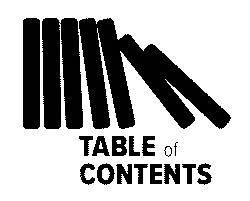
by Mary E. Scott
[Excerpts] ...
[...]

Our camp was indeed what had once been a beautiful Presbyterian mission compound. It was a little over six acres in size and had housed a well‐equipped high school with classrooms and administration buildings, a church, hospital, bakery ovens, three kitchens, and row after row of 9 x 12‐ foot rooms used to house the resident students. The buildings seemed to be undamaged, but the contents were a shambles. Refuse was piled outside the buildings or strewn along the driveways by the garrisons of Japanese and Chinese soldiers who had been billeted there.
Our immediate task was to clean up the place. It was a gigantic undertaking but the people had a mind to work. Besides, there were valuable broken desks and chairs that could be used if repaired. Scrounging, looking anywhere, even in rubbish heaps to find something usable, became an everyday operation.
It soon became apparent that one of the greatest needs for the internees was for a working hospital. There were sure to be illnesses in our community of nearly 2,000, particularly with the unsanitary conditions under which we lived. Rumor had it (and I can’t verify it) that the Japanese had used part of the original hospital building as a stable.
Nothing daunted, the doctors and nurses in camp and many volunteers, including Mr. Moses who had been business manager of our Nazarene hospital in Taming, began the herculean task of cleaning up and salvaging what equipment they could from piles of debris scattered about everywhere. Within eight days, the hospital was functioning sufficiently to feed and care for patients, and in two more days the operating room and laboratory were ready for use.
Another very serious problem was that of sanitary facilities. At first there were only six cubicles, equipped with oriental flush toilets that didn’t flush, available for about 800 women. Excrement overflowed the bowls until it required a strong stomach to use them at all. Missionaries, both Catholic and Protestant, tackled the task of cleanup until our “camp engineers” came up with a solution.
Large water barrels were placed at one end of the latrine, into which used wash water was poured. Each user of the latrine was required to “flush” the toilet with a half bucket of water. Ladies were stationed at the latrine to inspect each toilet after use to see that it had been properly flushed.
All went well as long as there was water in the barrels, but sometimes the water ran out!
Later the latrine which we called the “cowshed” was assigned to the ladies. Each of the six “stalls” consisted of two narrow cement platforms on the sides on which to stand, a cemented hole for solids and a slanted front which carried the urine to a trough. In the morning a Chinese “night soil” coolie came in to scoop out the solids (it was valuable to him as fertilizer). The assigned latrine cleaners of the camp went in to finish the cleanup. Sometimes the odors were so pungent that our noses literally burned when we came near, especially in the summer.
But there were very profitable lessons to be learned, even as a latrine cleaner. My godly, sanctified railroader father, brought up a Canadian Presbyterian, had taught us around the family altar that a Christian can do anything that is right to glorify God. I shall never forget one Wednesday morning when this teaching became a reality. I was on “latrine duty” and in the midst of that very unpleasant task, I looked up and said, “Now, Lord, help me to clean these latrines in a manner that will glorify You.”
And I felt that the Lord himself came down that Wednes‐ day morning. He took hold of the bails of those two big, five‐ gallon gasoline cans that had been made into water pails. He helped me carry them to the latrine. He took hold of that little, stubby brush, and together we dug into the corners and the crevices trying to get every place as clean as we could. He got down on His knees when I got down on my knees; and with a little old cloth, no disinfectant or soap, just plain cold water, we got every place as sanitary as we could.
When I finished, I looked back and said, “Now, Lord, does it please You?” I couldn’t see a place where I could have done a better job. I wasn’t cleaning latrines because I’d been assigned it, or be‐ cause that particular week I’d volunteered to do it. I was cleaning latrines for my Lord. That was one of the sweetest and one of the most real experiences I’ve had with the Lord in all my Christian life.
But even this task was not with‐ out its physical and material rewards. As one of the “dirty workers,” latrine cleaners were allowed to take a shower every day even during those times when others were limited to one shower a week!
[excerpt]
Most of the women in camp had been accustomed to having Chinese servants in their homes. To be plunged so suddenly into a world of hard, manual labor was good for them if it wasn’t pleasant. Labor was the great leveller, and men and women alike were soon known not by their “outside” occupation but by the quality of their work, their spirit of willingness, and their measure of enthusiasm. A “lazy” worker was not much respected, as all the work we did was for our own maintenance and the welfare of all in our community, not for our Japanese captors. We judged people not by what they had, but for what they were.
[excerpt]
After the many initial adjustments, we led quite a normal life on the 6.2 acres assigned to us behind the eight‐foot wall. Work, recreation, and social and religious activities filled our days and evenings.
My work assignments in camp were varied. Besides being a member of the “sanitary police”, I was asked to work in the kitchen at various tasks. The same week I supervised the serving team, I was also latrine cleaner. It kept me hurrying all morning to complete the latrine cleanup, take a shower and clean my fingernails, and get to the kitchen in time to help serve lunch. I liked the bread‐slicing job (by hand). We tried to please everyone by cutting some loaves in thin slices, some medium, and some thick.
Being kitchen laundress was not without its problems and rewards. The cooks soon discovered that the people ate the soup or stew better if they found no clue as to where the flavor came from. So they put all the “stuff’ in flour sacks, boiled out the flavor, then discarded the “stuff’ before serving the food. It was our job to wash these dirty, greasy, smelly meat sacks as well as kitchen aprons and towels. At least we had hot water to do it with, though at times soap was scarce. Because I had to go to the quarters office later in the morning, I usually did the kitchen laundry between 4:30 and 6:00 in the morning.
#

[further reading]
http://www.weihsien-paintings.org/books/KeptInSafeguard-MaryScott/MaryScott(web).pdf
#








